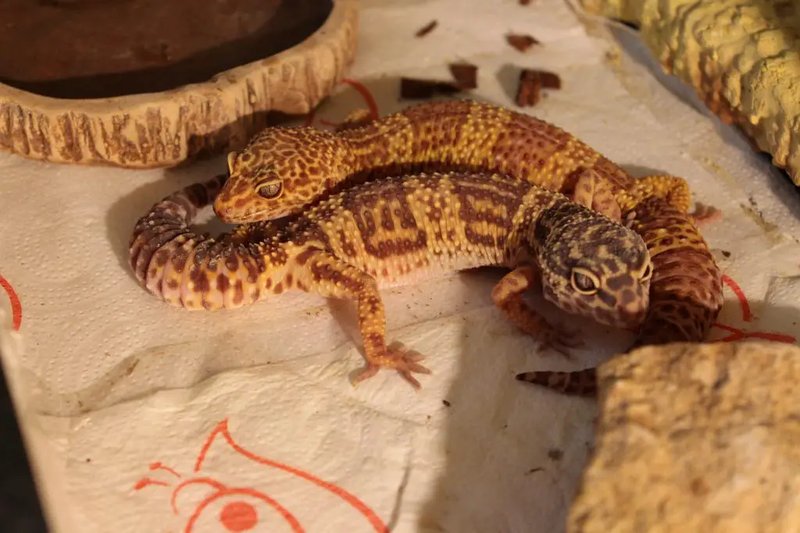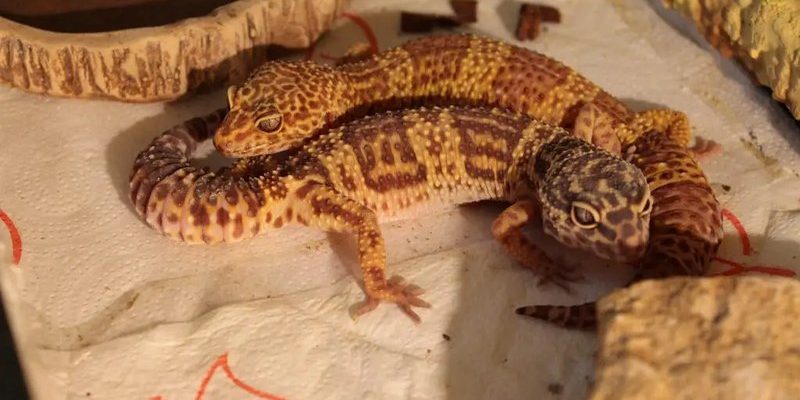
Understanding Leopard Gecko Behavior
Before you decide to house multiple leopard geckos together, it’s essential to understand their behavior. These little guys are naturally solitary in the wild. While they can tolerate the presence of other geckos, they typically prefer to stake out their own territory. Understanding their instincts is the first step in determining if living together is feasible.
When housed together, geckos may establish a pecking order, with one becoming dominant over the others. This can lead to stress or even aggression. You might be wondering how to recognize signs of stress. A gecko that’s constantly hiding, not eating, or showing aggressive behavior toward others might not be happy in a shared environment.
Another consideration is their individual personalities. Just like us, some geckos are more social than others. If you have a particularly shy one, it might need its own space to thrive. Look at their behavior when you first introduce them; observing them closely can reveal a lot.
Choosing the Right Size Enclosure
If you’re thinking about housing multiple leopard geckos together, the size of the enclosure is crucial. The general rule is to provide at least 10 gallons of space per gecko. This ensures that each gecko has enough room to establish a territory and find hiding spots without feeling cramped.
A larger enclosure not only reduces aggression but also allows for more environmental enrichment. Think of it as giving your geckos a spacious park instead of a tiny backyard. You can include various hiding spots, climbing areas, and basking spots to keep them engaged.
Make sure to furnish the enclosure with plenty of hiding places—rocks, logs, or commercial reptile hides can make great options. This way, if one gecko feels threatened, it has a safe place to retreat. Just remember that more space doesn’t mean overcrowding. Always keep an eye on the dynamics within the enclosure.
Gender Dynamics: Males vs. Females
An important aspect of keeping leopard geckos together is their gender. Generally, it’s best to house females together and males separately. Male leopard geckos can be territorial and often engage in fights. Even if they start off friendly, that can change if they assert dominance.
If you have a group of females, they tend to be more social and can coexist peacefully. It’s like a girls’ night in! However, even females can have territorial disputes, especially if the enclosure isn’t spacious enough.
If you’re considering introducing a male to your female group, be cautious and observe their interactions closely. Sometimes, the best approach is to house them separately until you’re sure they can get along.
Nurturing the Right Environment
Creating a suitable environment for your leopard geckos is key to their happiness, especially in a shared space. Temperature and humidity levels need to be just right. Leopard geckos thrive in a warm environment, so make sure one side of the enclosure is warmer for basking, while the other side offers a cooler retreat.
You should aim for a hotspot of around 88-92°F (31-33°C) and a cooler side around 75-80°F (24-27°C). Use a reliable thermometer to monitor these temperatures closely.
Humidity is also important. Aim for about 30-40% humidity in the tank. Too much moisture can lead to respiratory issues, while too little can cause shedding problems. Keep a spot for humidity control, like a water dish or a moist hide for shedding. Providing a comfortable environment will help reduce stress and create a peaceful atmosphere for your geckos.
Feeding Considerations When Housing Multiple Geckos
Feeding multiple leopard geckos in the same enclosure can be tricky. You’ll want to ensure every gecko receives its fair share of food. If one gecko is dominant, it may hog food and prevent others from eating adequately.
To tackle this, consider setting up feeding stations. This could mean placing food dishes in separate corners of the enclosure or even feeding them in a separate area. This way, everyone has a chance to chow down without feeling threatened.
Additionally, always provide a varied diet. Crickets, mealworms, and roaches are great staples, but be sure to dust them with calcium and vitamin supplements to keep your geckos healthy. Regular feeding not only helps growth but ensures that they are less likely to fight over food.
Signs of Conflict and How to Manage It
Even in the most carefully set-up enclosures, conflicts can arise. Knowing the signs of distress or aggression can help you intervene early. Look out for behaviors like tail waving, hissing, or one gecko chasing another. If you notice such behaviors, it might be time to separate them to prevent injury.
Sometimes, you may see one gecko dominating the basking spot or food. If that’s the case, you can try rearranging the habitat or adding more resources to reduce competition.
In extreme cases, separating geckos may be the best solution for everyone’s wellbeing. It’s important to prioritize their health and happiness over the idea of keeping them together.
Final Thoughts on Housing Leopard Geckos Together
So, can leopard geckos live together? The answer is a bit of a balancing act. While it is possible to house them together, you need the right setup, understanding of their behavior, and awareness of potential conflicts.
Consider their size, gender, and individual personalities before making the leap. You could create a vibrant and lively home for your geckos if you keep a close eye on their interactions and ensure they have plenty of space and resources.
In the end, the goal is to create a safe, comfortable habitat where your leopard geckos can thrive—together or apart. With some careful planning and observation, you can enjoy the company of these stunning creatures for years to come.

